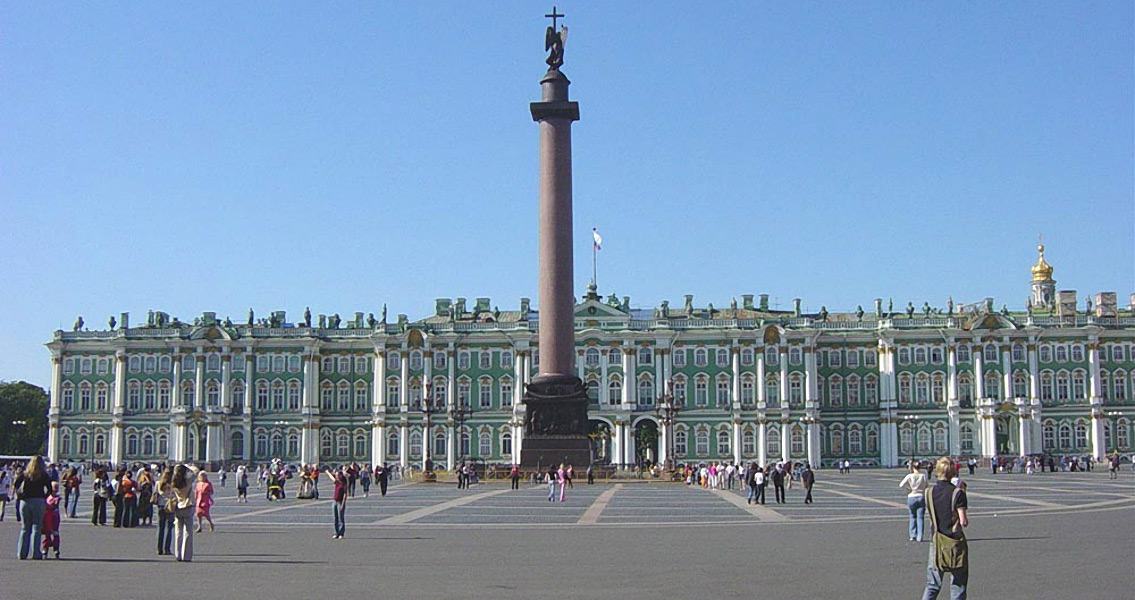<![CDATA[22nd January marks the anniversary of the 1905 Bloody Sunday massacre in St. Petersburg, Russia. The event was a hugely important moment in Russian history, highlighting the increasingly volatile situation in Russia, and the precarious grip on power held by the Tsarist dynasty. The immediate cause of the massacre was a massive workers strike in St. Petersburg. After four members of the Assembly of Russian Workers had been dismissed from the Putilov Iron Works, Father George Gapon, the head of the Assembly, called a strike. The protest escalated rapidly, until eventually 120,000 workers had stopped working. Realising that the current situation would be unsustainable, Gapon organised a march to the Winter Palace in St. Petersburg on the 22nd January. He planned to make a personal appeal to Tsar Nicholas II, by delivering a petition outlining workers demands. The demands included a reduction in the length of the working day and criteria for improving working conditions. The petition had been signed by over 150,000 workers. Exactly how many people ultimately took part in the procession is unclear, but according to accounts from the time it was a mixture of workers and their families, including wives, children and elderly parents. The marchers carried religious icons and images of the Tsar, alongside placards listing their demands. Gapon had informed the authorities in St. Petersburg of his intention to deliver the petition, in the hope of avoiding conflict, something which proved tragically unsuccessful. Nicholas II and his close family had fled the city to avoid the protest, while Grand Duke Vladimir, Nicholas' uncle and chief of the security police, was left in the Winter Palace. Vladimir was responsible for dealing with the march, and had tried, unsuccessfully, to prevent it from starting. As the procession progressed through St. Petersburg, warning shots were fired by soldiers stationed throughout the city, hoping to stop the procession before it reached the Palace. It seems that eventually the Cossacks outside the Palace panicked, and charged at the crowd with swords and guns. By the time the protesters had fled through the streets of St. Petersburg, 100 had been killed, and 300 wounded by the soldiers attack. The late nineteenth century and early twentieth centuries had seen drastic changes in Russian society, as industrialisation and a push towards democracy put increasing pressure on the old governmental institutions. As Russia industrialised rapidly in an attempt to match its international competition, the conditions for workers deteriorated. By the start of the twentieth century the average Russian worked an eleven hour day, (ten hours on a Saturday) in atrocious and often dangerous conditions. Attempts to form trade unions were blocked by factory owners, but in 1903 Gapon formed the Assembly of Russian Workers, which had over 9000 members within a year. The Assembly was legalised in an attempt by the government to diffuse the growing dissatisfaction of workers, by providing a legal platform for them to express their frustrations. In the twentieth century a host of anti-Tsarist organisations, whether the Union of Liberation which aimed at establishing parliamentary democracy, or the revolutionary socialists, had been gathering momentum. It was hoped that by allowing the Assemblies, Russian workers would be drawn away from seeking political reform, and focus purely on economic gains. Similar to when the 1917 revolution ultimately toppled the Tsar, in 1905 Russia was embroiled in a costly conflict. The Russo-Japanese War was going badly, as Russia's imperialist ambitions in the Far East looked to be thwarted. The conflict put a strain on Russian society and created an economic slump. Subsequent inflation meant that in real terms Russian workers had their wages cut by 20%. The massacre triggered a wave of unrest throughout the country, including strikes in other cities, mutinies in the armed forces and peasant uprisings in the countryside, which came to be known as the revolution of 1905. The Tsar's position became increasingly precarious, and in October he ultimately agreed a new manifesto, one which made some concessions to democracy by establishing a series of representative assemblies to work towards reform. The concessions bought an end to the unrest triggered by the massacre, and led to many revolutionary leaders fleeing the country for fear of government reprisals. The Tsar had delayed the impending revolutionary change in Russian society, but not averted it. Bloody Sunday was an explosion of the dissatisfaction that had been brewing in Russia in the early twentieth century, as well as a catalyst for further protest against the Tsar, who's image was seriously damaged by the event. The failure to deal with the problems so publicly demonstrated on 22nd January 1905 allowed them to escalate- culminating in the Russian Revolution of 1917. Image courtesy of Wikimedia commons user: Cccc3333]]>
Russia's Bloody Sunday
